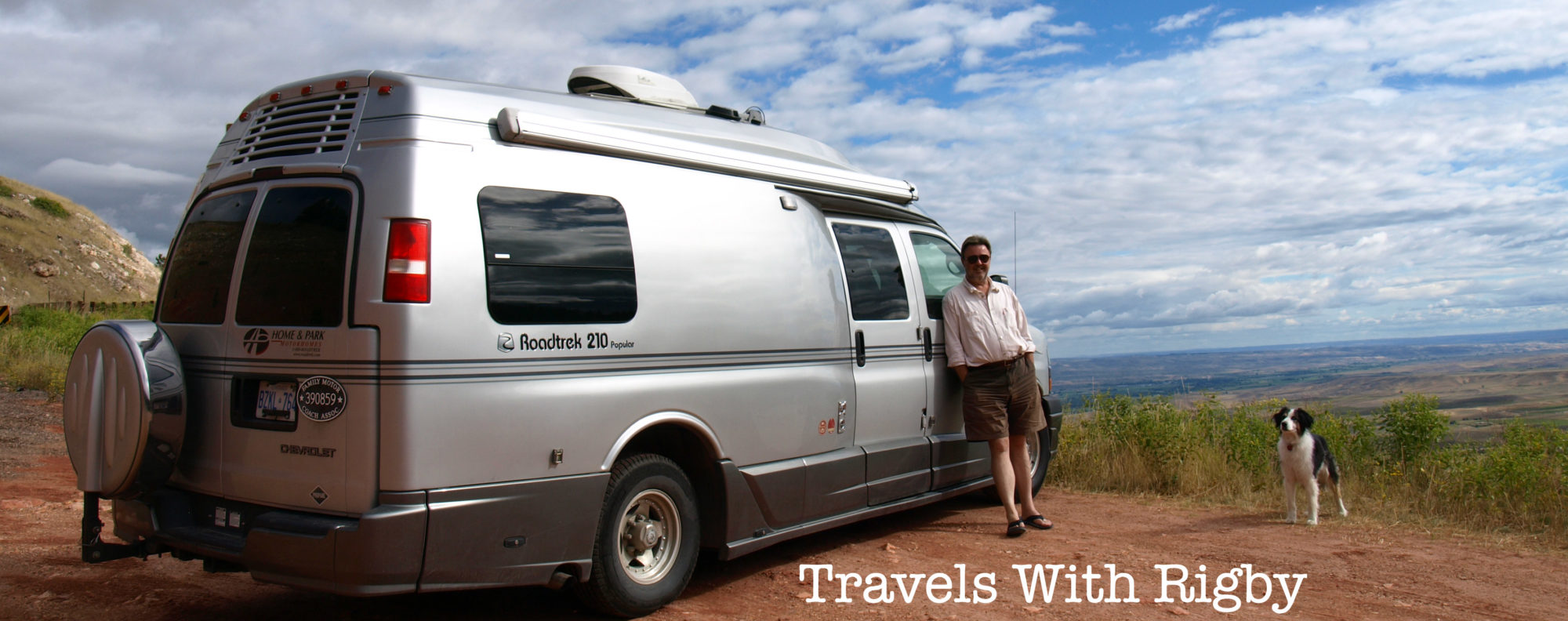The U.S. National Park Service is made up of many different types of sites. Two of the most common are National Parks and National Monuments, which are often confused. The parks have been protected for eternity by an act of Congress; monuments have been created by presidential proclamation. It doesn’t mean that there is an obelisk or statue at the latter. It’s a common misconception – the park ranger at Colorado National Monument near Grand Junction, CO told us the oddest question he gets is, “Where is the monument?”

Well, the whole park at Colorado National Monument is the monument. There was little in the valley communities below to prepare us for the jaw-dropping scenery along the 23-mile, Rim Rock Drive following the park’s exposed ridge. Craig – ever the boundary pusher – bellied up to the cliff edge to get photos. I did a mental update on our life insurance policies.

A highlight for us was actually inside, at the Visitor Center where the excellent short film was full of ah-ha moments about the geology of the entire Colorado Plateau. It’s available on YouTube and shouldn’t be missed if you are heading west (and especially if you are a bit of a Geology Geek).
In a nutshell, 80 million years ago, this area was flat. Between 70 and 40 million years ago, moderately-strong earthquakes along the visible Redlands Fault created the tilt and shift in huge layers of rock, forming basins and uplifts. The faultline runs right through the park and we crisscrossed it several times – the erosion of the last 10 million years has exposed the actual fault. Subsequent erosion slowly removed loose and weaker rocks that crumble, creating dramatic canyons and spires of the rocks more resistant to wind and water.
We hiked a few trails (gotta get out of the van!) along cliff edges dotted with a sparse growth pinyon-juniper woodland. Many of the scrubby junipers – scaly leaves and waxy, blue berries – are 800-years-old. In the distance we could see a group of rock climbers who’d made it to the summit of vertiginously-high Independence Rock.
Back at valley level we overnighted and dined out in Grand Junction, a college town much the same size as our hometown. The pedestrian-friendly, downtown main street looks as though it has triumphed over the hit by the big box stores on city’s edge. There are independent, interesting eateries and shops, lots of places to sit and relax, and art sculptures that range from conventional to whimsical.
Colorado is known for craft breweries, so we ate dinner at Rockslide Restaurant and Brewery, the city’s first brew pub located in a historic, circa 1900s brick building. The menu ranged well beyond standard pub fare and there was a half-dozen of the brewery’s handcrafted beers on tap. The most popular is the Widowmaker Wheat, a mildly hopped blend of pale and wheat malts. Craig (who loves Guinness) went for the Big Bear Oatmeal Stout – declared as superb!
The next day we had a late afternoon lunch at Café Sol (also on Main Street) – a fantastic dining experience. Clean, funky, colourful with an interesting menu of soups, salads, paninis and desserts created with mainly organic ingredients. Incredibly fresh foods and enormous portions (they have self-serve To-Go boxes). We were splitting a side salad that could have easily satisfied four to five.

While we do have a strong preference for the more rustic state and national park campgrounds, our spot at Junction West RV Park hit several markers: it was super clean, centrally located for all the local stops we wanted to make, super clean, had a fast Wi-Fi signal so we could write and file stories, was quiet and spacious . . . and did we mention super clean?
www.colorado.com
www.visittheusa.ca















































































